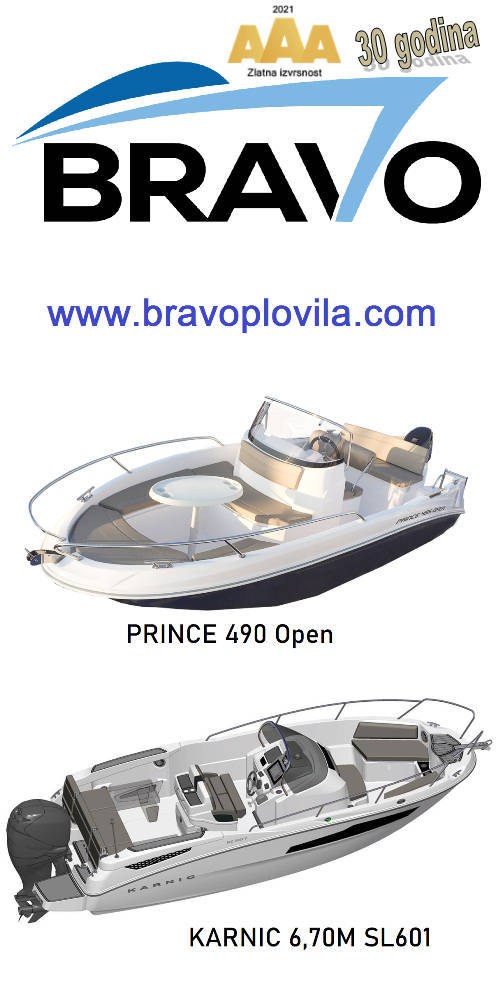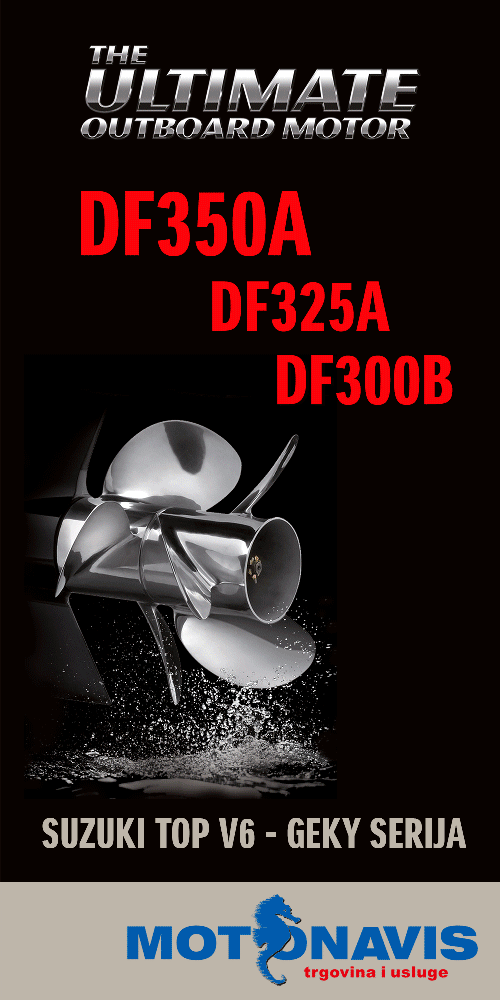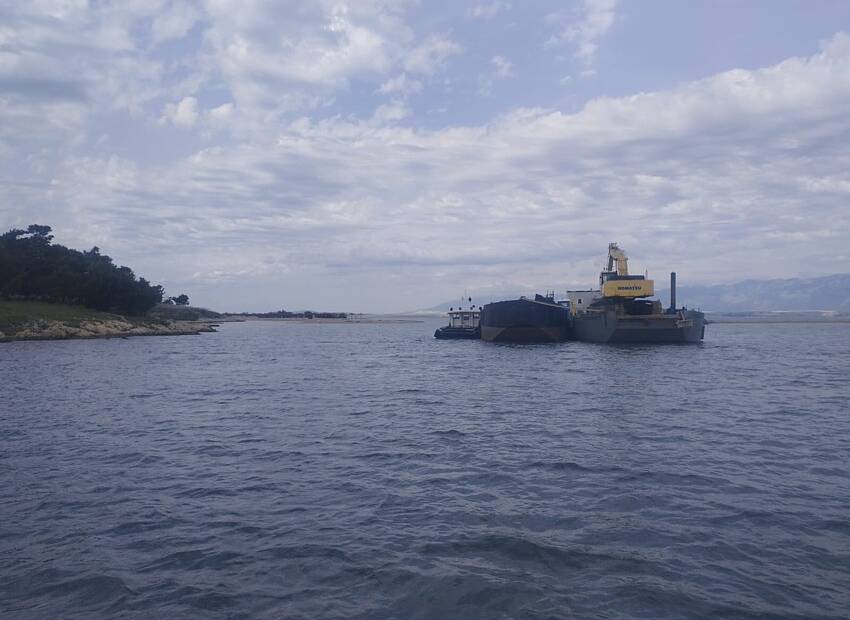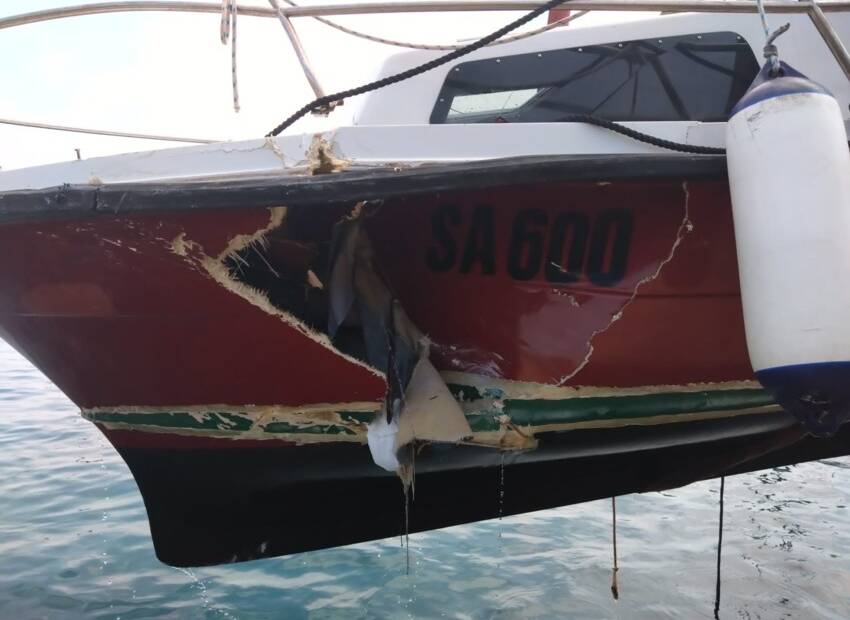Just on the horizon, you see the threat of danger ...
blinding, white-hot streaks of deadly lightening!
What fast, easy steps can you take right now...
to find out if this powerful force of Mother Nature...
is on a collision course with your small sailboat?
~~~~~~~~~~~~~~~~~~~~
Sailing sights that Mother Nature whips up can take any sailor's breath away--like her spectacular "sound and light" show of lightning in the distance. But it's a primary safety concern for all sailors. Your sailboat mast protrudes skyward to provide an almost ideal lightning rod. Use these three sailing tips to boost sailing safety the next time you see thunderbolts on the horizon.
1. How Far Away Are Those Lightning Bolts?
To determine your distance to the lightning, time the period from the flash of lightning to the boom of thunder. Use one of two methods to determine range in nautical miles:
Divide the number of seconds by 5, or
Multiply the number of seconds by 0.2
Example 1:
You have timed the interval from flash to boom, and the time period is 15 seconds. 15 / 5 = 3.0 nautical miles. You get the same result from using the second method. 15 x 0.2 = 3.0 nautical miles.
Example 2:
You have timed the "flash to boom" interval as 8 seconds. Estimate how far away you are from the lightning. 8 / 5 = 1.6 miles. Or, 8 x 0.2 = 1.6 miles.
2. Are You on a Collision Course With Lightning?
Take bearings to lightning flashes as soon as you sight them on the horizon. This will tell you in just minutes whether the lightning will pass your small sailboat free and clear--or whether you need to take action to avoid contact. Follow the example below along with the illustration.
Track lightning by range and bearing with installed radar. Water droplets inside storm clouds provide excellent reflectivity for a radar signal. If you do not have installed radar, use a hand bearing compass combined with the distance method described above.
These "drift" bearings will give you an indication of storm movement. The faster the bearings drift to the left or right (see below), the better the chance that you will avoid being in the direct path of the lightning.
Follow along with the example below and illustration above.
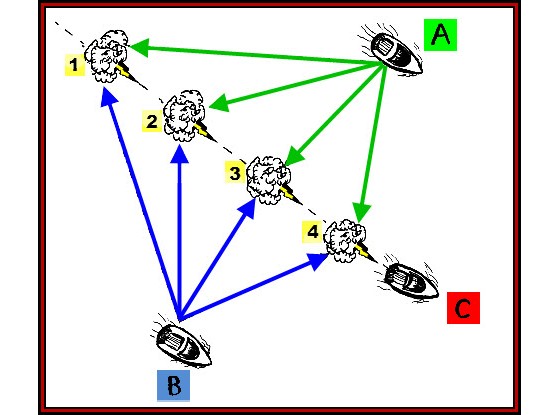
Vessels A, B, and C are several miles apart, with lightning nearby. At Position 1, each vessel takes a bearing to the lightning on the horizon. At Position 2, Vessel A observes the lightning has "drifted" or moved to the left, which indicates left bearing drift. Vessel B observes the lightning has "drifted" or moved to the right, which indicates right bearing drift. Vessels A and B should continue to shoot bearings and calculate distance until the storm has passed (position 4 in the illustration).
Note in the idealized illustration that the distance to the storm clouds remains constant. Take care to note the range (distance) when you track lightning by radar. If you use just a hand bearing compass, you will need to estimate range (distance) by the distance methods described earlier.
Now take a look at Vessel C...
Vessel C observes that the bearing to the lightning has not changed over a series of successive bearings. This indicates "steady" (also called "constant") bearing drift--with no change in bearing. This means that the lightning may be on a collision course with Vessel C. As you can see, successive bearings serve to verify the first observation for each of these vessels.
Vessel C needs to take immediate action to avoid direct contact. One strategy would be to turn perpendicular (90°) to the lightning path, increase speed, and continue on this evasive course until he or she obtains rapid bearing drift. Regain track after the lightning has passed and no longer presents a threat to sailing safety.
If at any time, the bearing drift for Vessel A or B slows or becomes steady, or the range (distance) decreases, the skipper on each vessel would need to decide on the best defensive action to clear out of harm's way. Continue to shoot bearings and estimate range to the lightning until the threat has passed by.
3. How Can You Protect Your Small Sailboat?
The best protection comes from forming a cone over the boat, with the apex at the boat's highest point. Ground the mast to the bonding point; in sailboats, this should be the keel. Always check with the manufacturer to find out if your boat is grounded for lightning protection.
Vessels without proper grounding installations might try attaching chain, copper wire, or battery cables to the shrouds and the backstay. Feed it over the side and into the water to provide a ground path if lightning strikes.
Get instant access to 400+ sailing articles, videos, live discussion forums, and free ebooks! Click here to find out more!
Captain John





